Silverpush’s Contextual Approach to Sustainable Digital Advertising
PUBLISH DATE: 08 May 2023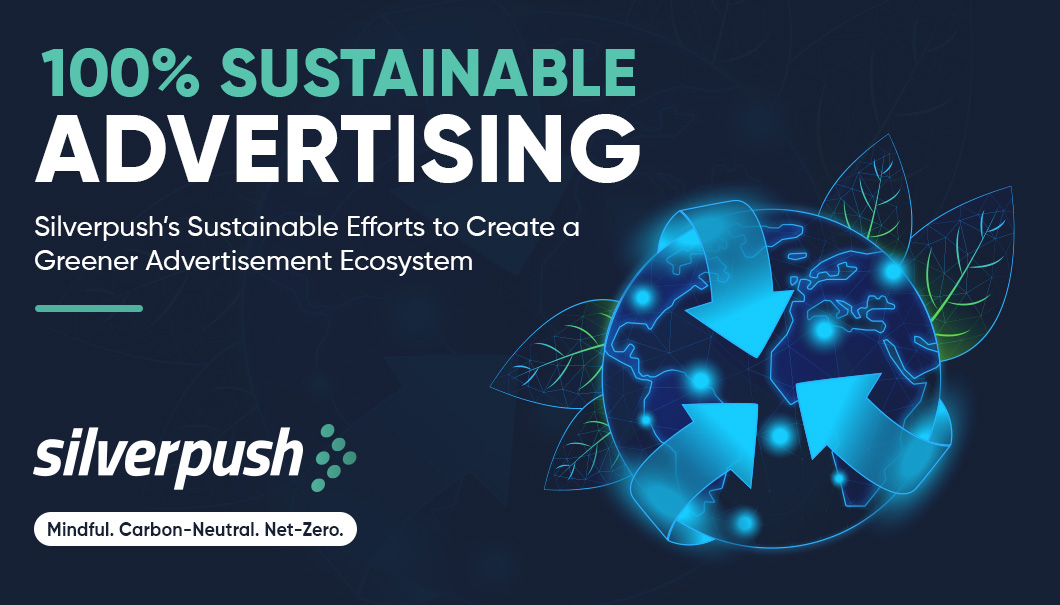
The aviation industry has been labeled as a notorious contributor to greenhouse gas emissions, however, the online advertising industry is no less.
Digital initiatives account for 3.5% of global GHG emissions, surpassing the aviation industry’s 2.5% share, according to the French think tank The Shift Project.
The digital ecosystem now makes up the fastest-growing source of GHG emissions, recording a 6% annual increase each year for the last five years.
The advertising industry requires a new roadmap to connect businesses with customers in the most effective way with the least possible impact on the environment. Advertising contextually can help!
Silverpush, an AI-powered contextual advertising firm, is on a mission to make digital advertising sustainable. We are continuously looking for ways to decarbonize our digital presence by monitoring our carbon consumption in real time.
This blog post will explore the urgent need to pull the emergency brake and prioritize cutting advertising emissions and how at Silverpush, we reduced 2333 tons of CO2 emissions in the past 5 years by advertising contextually.
Key Statistics
- A mock digital advertising campaign produced 323 tons of CO2eq emissions, equivalent to the annual carbon footprint of 16 Americans.
- As per CLICKON, in 2021, nearly 32% of UK brands expressed their goal to achieve carbon neutrality by the end of 2023.
- The internet is responsible for almost 4% of global greenhouse gas emissions, equivalent to 1.6 billion metric tons, while the aviation industry accounts for nearly 5%.
How Digital Advertising is Impacting the Environment?
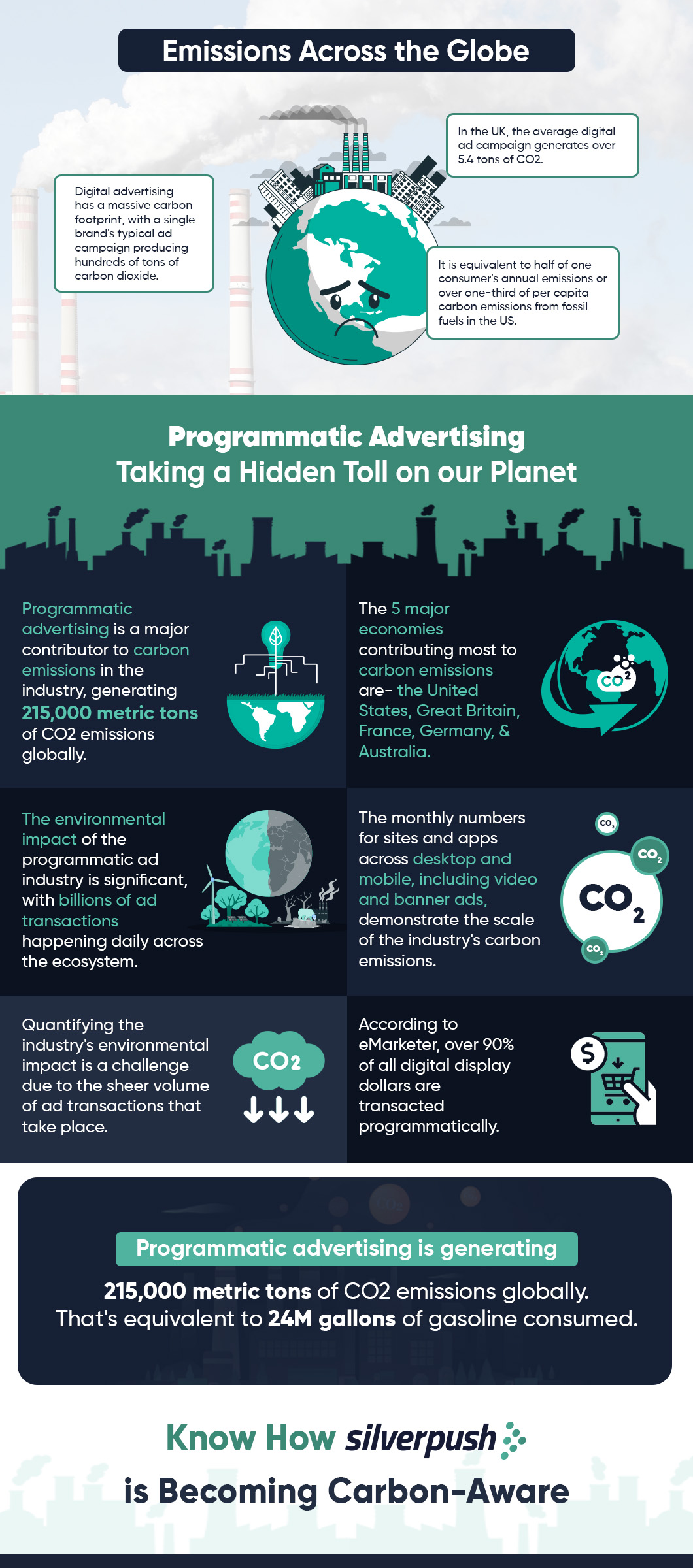
Reducing Carbon Footprint in the Advertisement Industry
The programmatic supply chain is a complex ecosystem with various components, each contributing to carbon emissions in different ways.
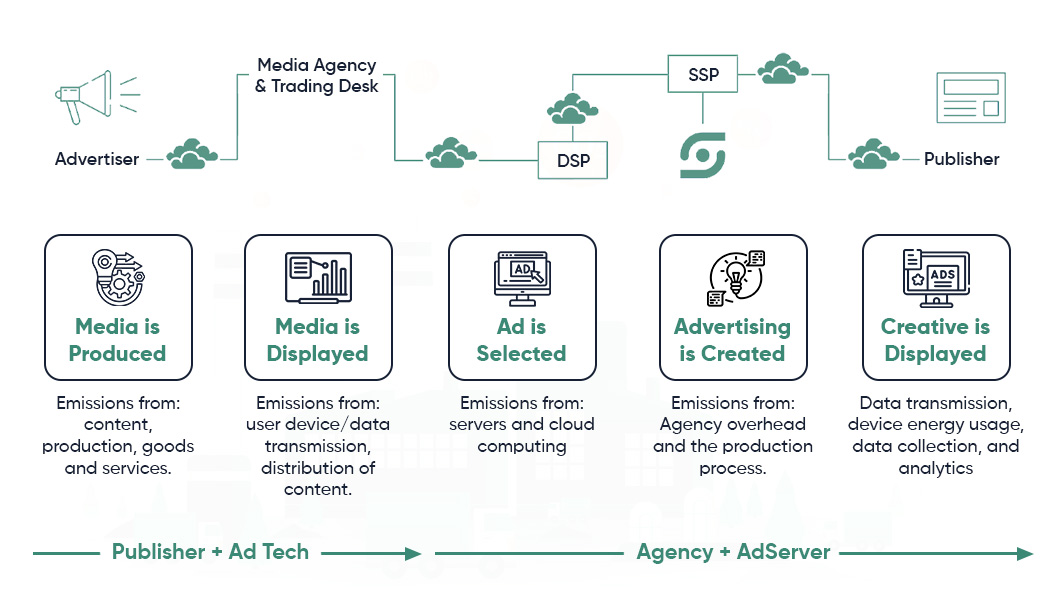
1. Demand Side Platforms (DSP): These enable advertisers to automatically purchase digital ad space from media publishers on an exchange.
2. Supply Side Platforms (SSP): Used by publishers to manage their inventory of available ad space.
3. Data Management Platform (DMP): It is a centralized data warehouse that collects and analyzes data from various sources to ensure that ads are targeted to the right audience. Ad Exchanges are where traders meet to negotiate the price of ad space.
4. Ad Exchanges: A virtual marketplace where buyers and sellers of digital ad space come together to negotiate prices and transact.
However, every aspect of this ecosystem requires servers and devices to operate, generating heat and carbon emissions that contribute to the Scope 3 emissions of brands and advertisers. Scope 3 emissions are those that result from activities outside of a company’s direct control but still impact its value chain. Even unsuccessful bids for ads that are not delivered contribute to the carbon footprint through media storage, computing power, and network traffic.
Also read: Silverpush’s Cookieless AI Solutions: Saving 1000 Tons of CO2eq in Advertising Campaigns
Strategies to Reduce Carbon Emissions in the Advertisement Industry
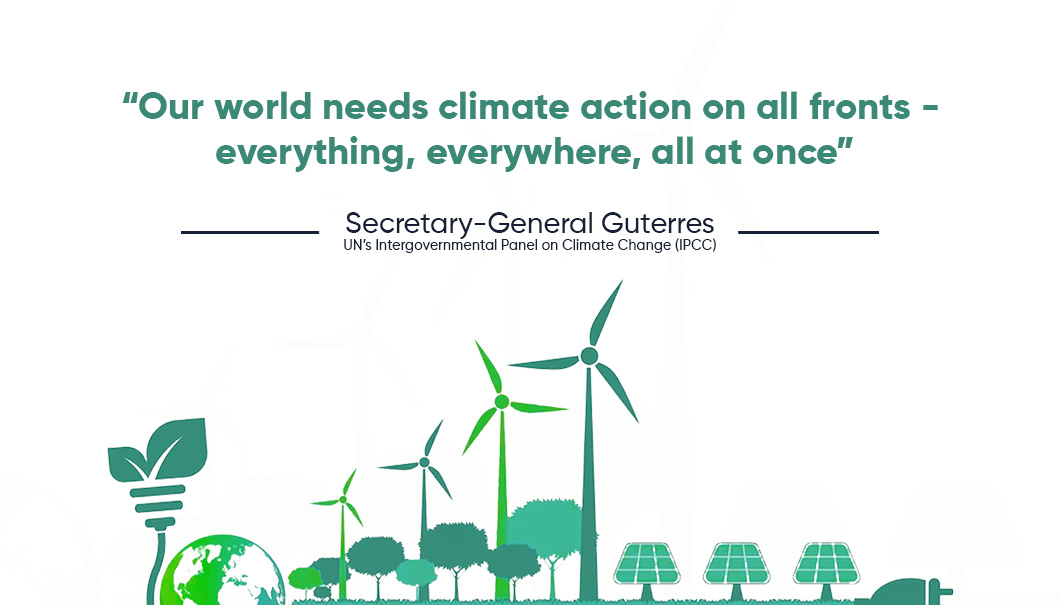
Here are some strategies that can be implemented to reduce the carbon footprint of a digital ad campaign:
1. Use Lightweight Files: DSPs, SSPs, and ad servers consume a significant amount of energy to process files for ad campaigns. To reduce energy usage and carbon emissions, advertisers can use lighter files.
2. Involve Vendors: Advertisers can collaborate with their vendors to adopt sustainable practices like using renewable energy-powered servers, file compression, and offsetting carbon emissions.
3. Timing of Ad Campaigns: Advertisers can schedule ad campaigns during off-peak hours when electricity is generated from sustainable sources, such as solar energy.
4. Green Agencies: Advertisers can partner with agencies that prioritize environmental protection and take measures to reduce their carbon footprint.
5. Green Platforms: By adopting green AdTech platforms and optimizing demand-path and supply-path, advertisers, agencies, and publishers can minimize carbon emissions.
6. Limit ad density: Publishers can adopt stricter ad policies to ensure that only higher-yielding ads run on their pages, reducing the overall number of ads and consequently, energy consumption.
7. Optimize AdTech platform performance: AdTech vendors can optimize their infrastructure setup, resulting in cost savings and reduced energy usage and carbon emissions.
8. Moving Towards Contextual Advertising: Contextual solutions significantly reduce multiple grams of carbon footprint and energy consumption every second due to their ability to target without the use of cookies and relevant audience targeting.
Silverpush’s Sustainability Efforts in Digital Advertising with Contextual Targeting
Storing and processing large amounts of data can have a significant impact on carbon emissions.
The generation of carbon dioxide (CO2) is often associated with the energy consumption required for data centers and servers to operate. Therefore, it is essential to consider the environmental impact of activities such as syncing cookies, audience data collection, and retargeting users, which all involve significant computation and data storage.
Therefore, the more data that is stored and processed, the greater the carbon footprint. To reduce their environmental impact, organizations should minimize unnecessary data collection and processing by carefully considering their data storage and processing practices.
How Silverpush is Becoming Carbon-Aware?
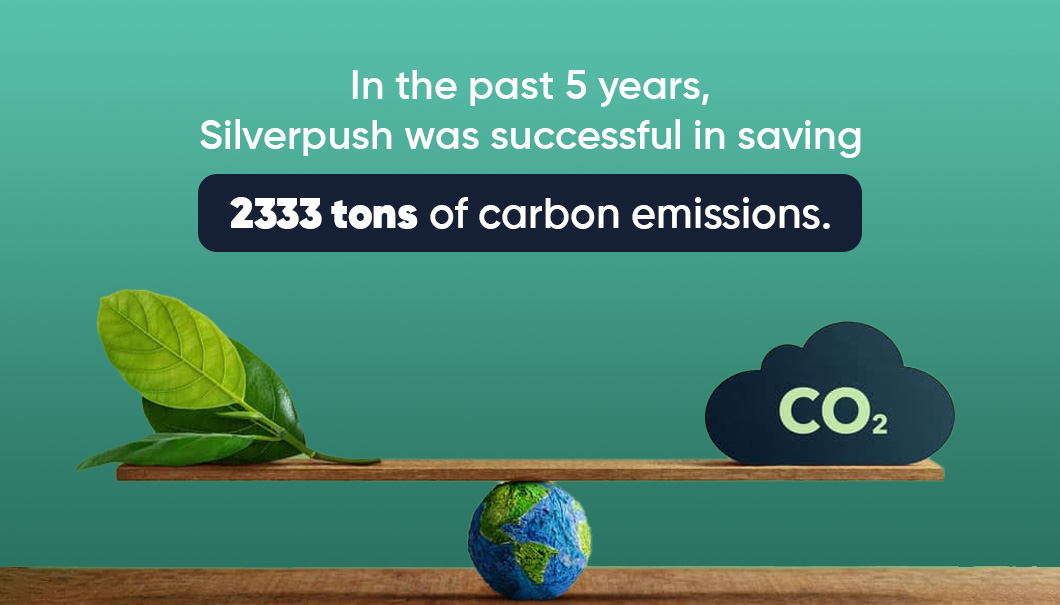
- Silverpush’s contextual advertising approach involves collecting data from third parties and integrating it into campaigns.
- To minimize their environmental impact, we have implemented a real-time monitoring system to optimize carbon consumption.
- By analyzing metrics of carbon consumption, they can identify which creative is consuming more emissions and make necessary adjustments.
- One major advantage of Silverpush’s contextual solutions is it is completely cookieless, and does not require large amounts of data storage to display relevant ads to their target audience.
- The AdTech pipeline is a complex system that involves multiple components, including data storage, processing, and delivery, which all contribute to carbon emissions. Additionally, serving advertisements often requires multiple middleware services.
- Similarly, some publishers have complex technical requirements to deliver their content, which can result in a significant amount of carbon emissions.
Way Forward
The digital advertising industry has a significant impact on the environment, contributing to global greenhouse gas emissions. As a responsible advertising firm, Silverpush recognizes the urgency of cutting down advertising emissions and has taken a strong stance toward promoting sustainability. By adopting contextual advertising and real-time carbon monitoring, Silverpush has successfully reduced its carbon footprint, making advertising more sustainable. Join us to build a better, greener world for everyone.
Advertising in the Age of Climate Change: The Adoption of Carbon Emission Metrics
PUBLISH DATE: 16 January 2023
The urgency of the climate crisis is increasing, and the media industry is no exception. While some professionals are working to reduce their direct operational emissions, there is an urgent need for common standards to be set for indirect emissions that come from digital advertising.
The digital advertising industry is becoming increasingly aware of the significant carbon footprint associated with the delivery of billions of digital ad impressions daily. Although a few brands, agencies, and ad tech companies have pledged to reach net zero carbon emissions by 2030 or sooner, the question remains: What is needed to encourage the majority of the industry to adopt similar goals?
Carbon Footprints Laid by Digital Ads
Although it is often thought of as more environmentally friendly, digital advertising still has a significant impact on the environment. In fact, it is responsible for about 2-4% of global carbon emissions, which is comparable to the aviation industry.
To give context, it is essential to note that serving one million ad impressions generates one metric ton of carbon dioxide emissions, which is equivalent to the emissions produced by (Source: venturebeat.com).
1. One passenger on a round-trip flight between Boston to London.
2. Charging over 121,000 smartphones to full battery power.
3. The carbon in 2.4 million plastic straws.
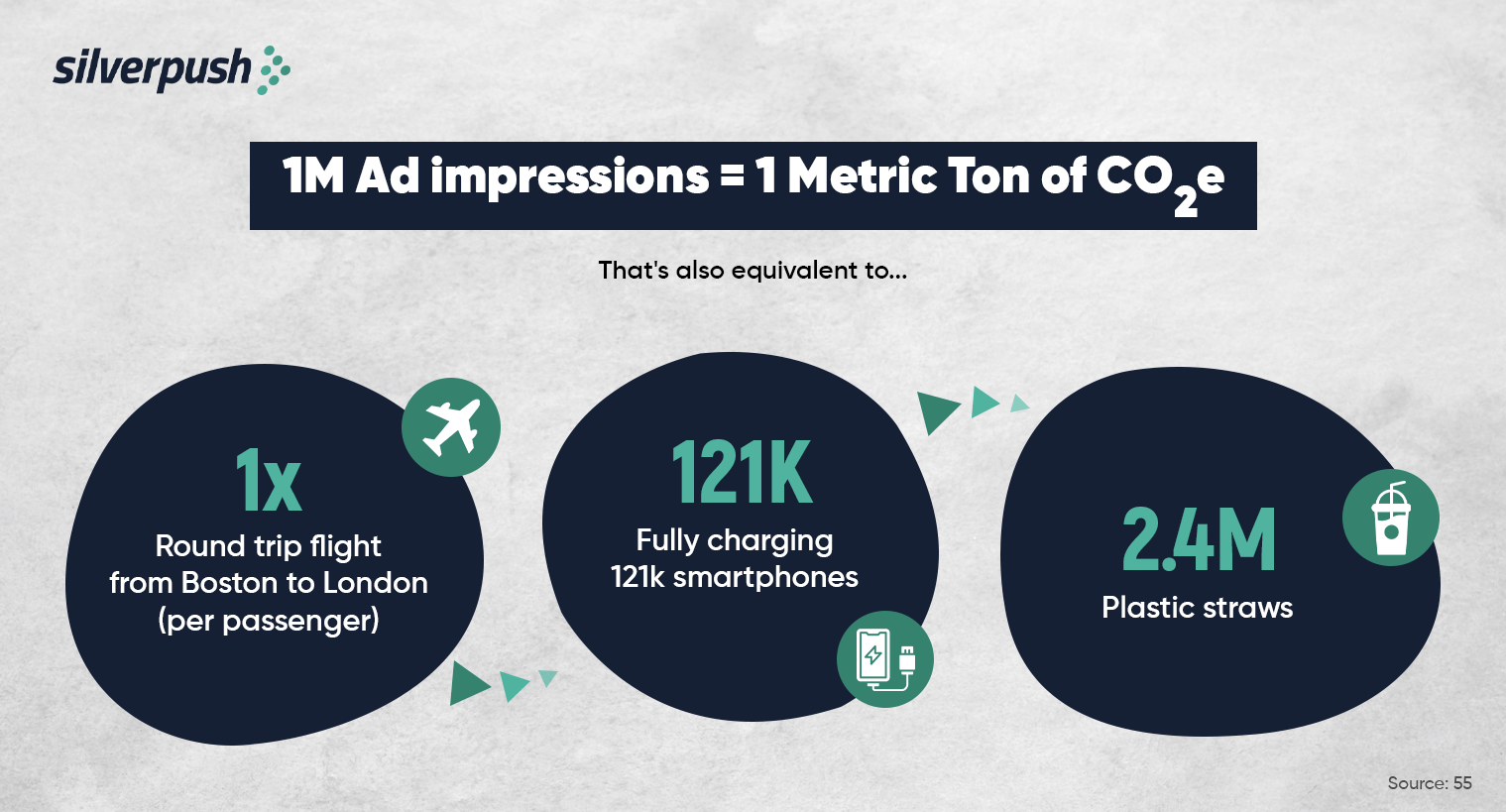 The operation of servers for digital advertising and the internet results in adverse environmental effects such as heat, noise, and pollution throughout the entire programmatic supply chain. This accumulative impact raises concerns for advertisers.
The operation of servers for digital advertising and the internet results in adverse environmental effects such as heat, noise, and pollution throughout the entire programmatic supply chain. This accumulative impact raises concerns for advertisers.
Tracking Carbon Emissions through Digital Ads
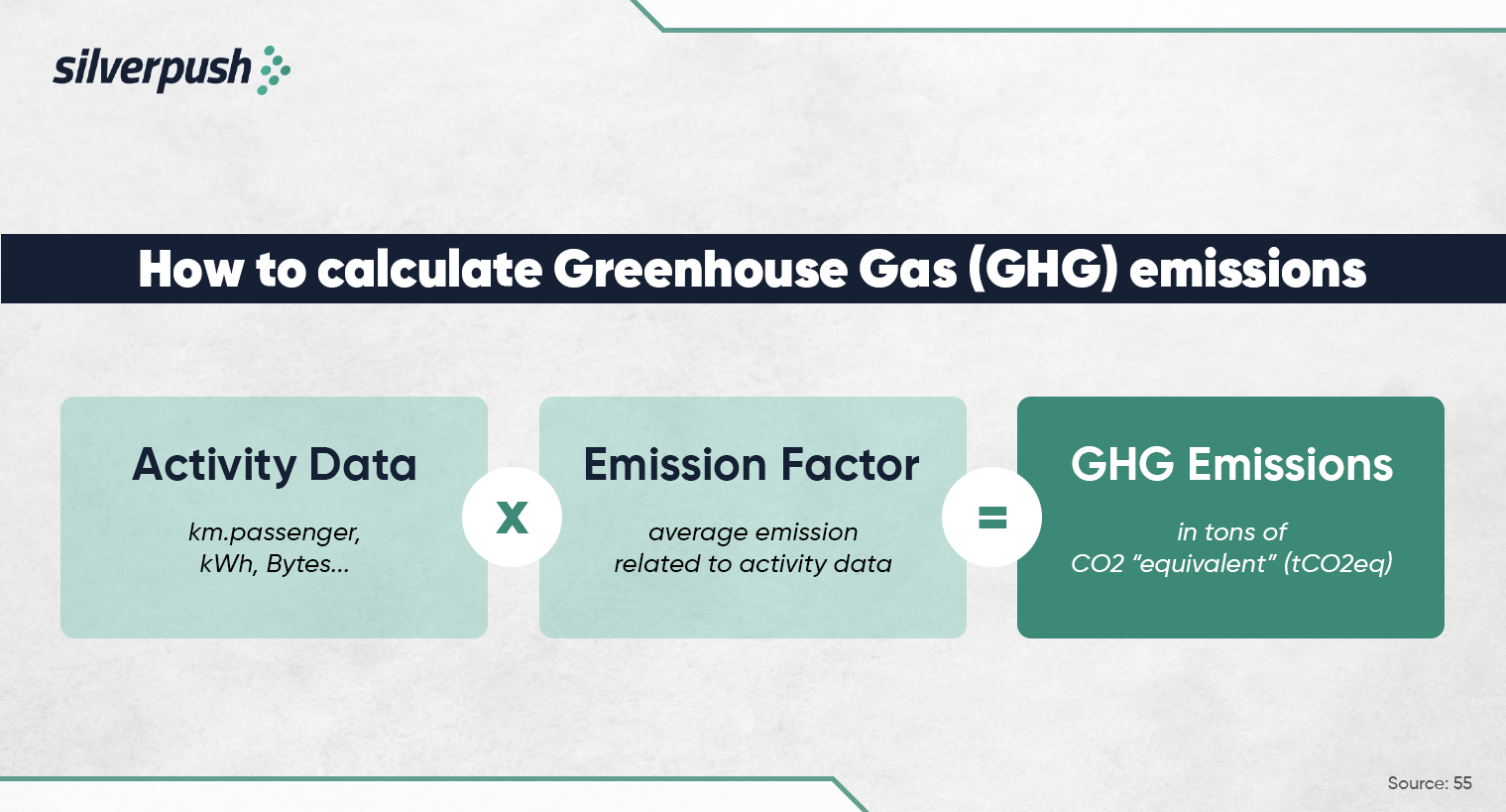
The digital advertising industry has been making progress in reducing its carbon emissions, following the Paris Agreement in 2016 which was signed by 200 countries with the goal of achieving net zero carbon emissions. In 2020, the UK Advertising Association launched Ad Net Zero, recognizing the industry’s need to become more sustainable. Many companies such as WPP, Havas, Dentsu, Disney, Unilever, and Dell have committed to reaching net zero emissions by 2030 or later.
Achieving aggressive carbon-reducing goals in the ad tech industry requires setting standards for measuring and reporting carbon emissions. Measuring carbon emissions allows an organization to determine its current level of CO2 waste and identify the primary sources of emissions. Similar to how companies report their financial performance, reporting on carbon emissions allows advertisers and brands to be transparent and accountable in their efforts to reach net zero carbon emissions.
Setting Industry Standards to Calculate Carbon Emissions
Measuring carbon emissions can be complex, but understanding the different components that contribute to a company’s carbon footprint can simplify the process. These components are typically broken down into three categories: Scope 1, Scope 2, and Scope 3 emissions.
Scope 1 emissions are direct emissions from sources that the company owns or controls, such as fuel combustion in boilers or vehicles. Scope 2 emissions are indirect emissions from the generation of purchased electricity, heat, or steam. Scope 3 emissions are other indirect emissions that occur in the value chain of the company, such as the emissions from the extraction of raw materials or the disposal of waste. which typically make up more than 90% of a company’s total carbon emissions.
For advertisers to accurately measure their carbon emissions, it is important to understand the contributions of their DSPs, SSPs, DMPs, publisher partners, and other vendors to their Scope 3 emissions. By assessing the impact of these vendors, advertisers can gain a more comprehensive understanding of their overall carbon footprint.
How do Silverpush’s Cookieless Solutions Neutralize Carbon Emissions?
One of the many reasons for high carbon emissions in digital advertising is audience targeting. Standard targeting methods may deliver high impressions, however, they generate wasted impressions due to the random placement of ads and the targeting of the wrong audience.
Silverpush offers precise and detailed targeting options that identify the most qualified audiences, which needlessly reduces pointless impressions and drastically reduces carbon impressions. By delivering relevant ads through contextual targeting, advertising campaigns become more efficient and fewer ads are displayed to users. This results in a reduction in energy consumption of servers and devices used to deliver ads, ultimately reducing CO2eqPM emissions.
Conclusion
Advertisers can reduce their environmental impact by implementing sustainable practices such as using renewable energy, measuring and reporting their carbon emissions, and offsetting their emissions through carbon credits or other means. They can also consider using more efficient technologies, such as programmatic advertising, that target specific audiences and reduce the number of ads delivered, ultimately reducing energy consumption.
Whether or not the ad tech industry will become carbon neutral by 2025 is uncertain and it would depend on the level of commitment from the industry players and the government to take the necessary steps to reduce carbon emissions. It would also require a concerted effort from all stakeholders, including advertisers, agencies, and technology providers, to adopt sustainable practices and invest in new technologies to lower their carbon footprint.
What do you think? Will Ad Industry become carbon neutral by 2025? Let us know your thoughts!







